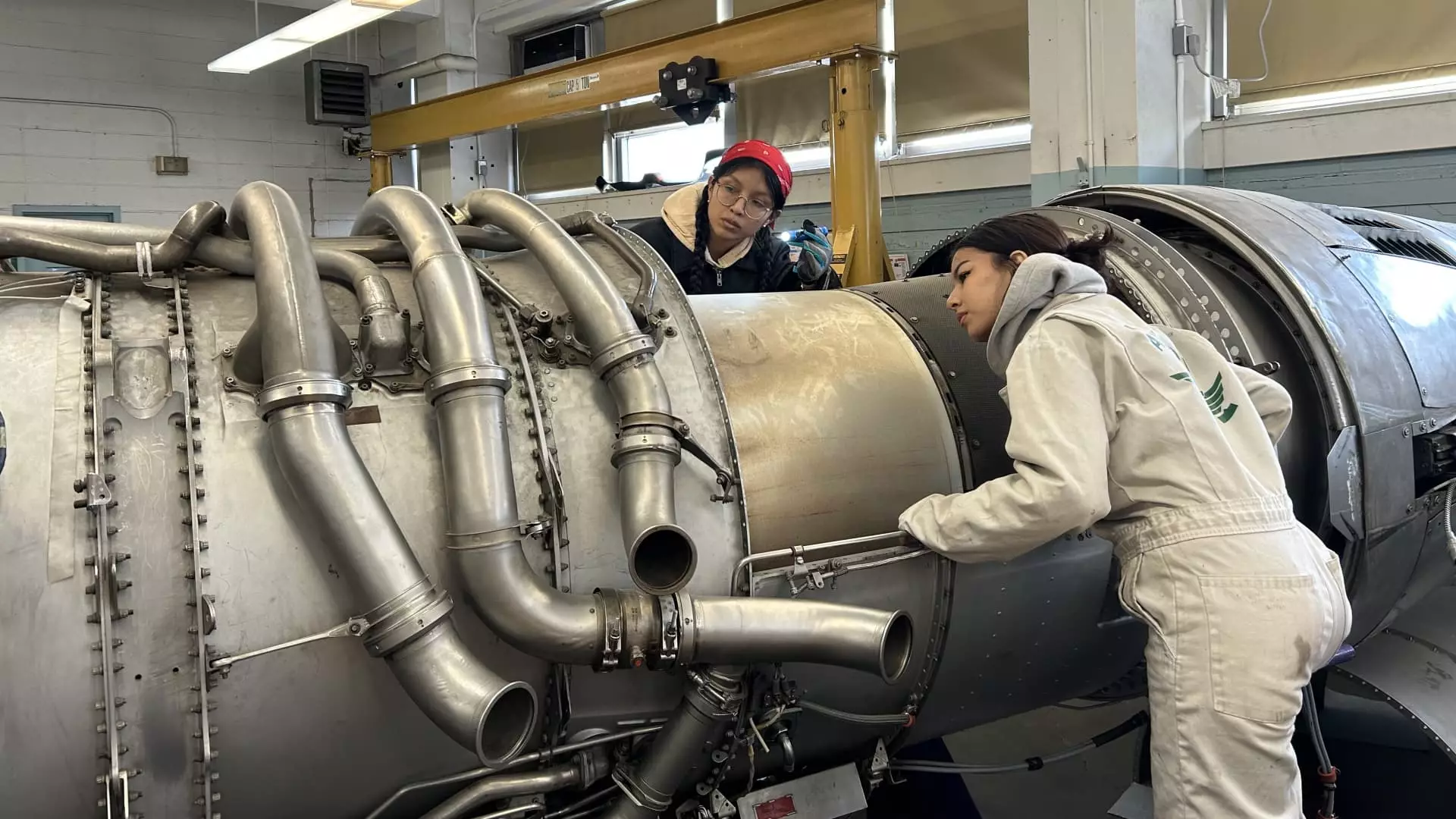As the nation strides forward in a turbulent economic landscape, a critical sector is facing an impending crisis, one that could severely undermine not only job creation but also the safety and efficiency of air travel: the aviation workforce. President Donald Trump’s assertions regarding the revival of manufacturing jobs in the United States clash starkly with the realities of the aviation industry, where a significant skills gap threatens the future of aircraft maintenance and production. Despite the administration’s proclamations, the average age of certified aircraft mechanics is a stark 54 years, with nearly 40% of these professionals edging past 60 years of age. This trend raises alarming concerns, particularly in light of a report that forecasts a shortfall of 25,000 technicians by 2028.
In a landscape where we celebrate technological advancements and innovation, the human element remains crucial. The industry’s struggles in recruiting younger talent are compounded by the pandemic’s ravaging impact, which decimated the workforce during a period when the aviation sector was poised for growth. The lost talent—a result of layoffs and early retirements—reflects a disconcerting reality: capable technicians are slipping away just as demand for air travel resurfaces. Ignoring this workforce crisis would be a grave mistake, one that could have cascading effects throughout the economy.
The Financial Incentives vs. Workforce Shortages
Compensation in aviation has certainly seen a boost, with average salaries for aircraft mechanics hovering around $79,140, which is considerably higher than the national median income. However, with such soaring figures come deeper frustrations. Many workers argue that even these competitive wages remain insufficient amid rising living costs and stagnant wages in other sectors. Critical voices, such as Sarah MacLeod from the Aeronautical Repair Station Association, underscore that the sector must do more to incentivize the recruitment and retention of skilled labor.
Consider the power dynamics at play: the industry is mired in a paradox where lucrative salaries exist alongside crippling skill shortages. This paradox threatens to stifle growth, making it essential for stakeholders—including manufacturers, airlines, and educational institutions—to come together and innovate solutions that will compel young people to consider aviation careers.
Transforming Perceptions: A Shift in Career Culture
To attract a new generation of technicians and engineers, the aviation sector must transform how it markets these career paths. GE’s Christian Meisner aptly pointed out that today’s manufacturing is far removed from the conventional image of assembly lines and hard hats; it’s highly advanced, utilizing technologies like precision machining and laser-guided operations. This narrative shift must extend into educational programs targeting high school students, showcasing the high-tech nature and societal contributions of aviation careers.
Schools such as Aviation High School in Queens, New York, present a formidable model for this transformation. Students there not only engage with aircraft maintenance but actively earn FAA licenses, blending academia with practical skills. The high application rates indicate a keen interest, but it also underscores the need for more such programs. By bolstering partnerships with local and regional airlines, these schools could create a pipeline of new talent who are not just qualified but also enthusiastic.
Additionally, targeting younger demographics, with programs even extending to junior highs, could invoke interest before a professional path is chosen. Establishing a culture where children aspire to careers in aviation is essential for reshaping public perceptions of this crucial industry.
The Broader Implications of Workforce Shortages
The looming aviation workforce crisis extends beyond merely operational challenges. Air traffic control, essential to the safety of every flight, is similarly threatened by staffing shortages. Consider the broader implications of failing to address these issues: potential flight delays, safety concerns, and even elevated costs that ripple through the economy. Manufacturing, including aviation, comprises about 9% of U.S. employment; neglecting this sector would not only weaken economic stability but also diminish the nation’s prowess on the global stage.
Meanwhile, as skilled labor is siphoned away to enhance other sectors, it’s crucial for policymakers to take a stand. While manufacturing jobs may have been outsourced, high-value technical sectors like aviation offer better job security and wages. Investment in recruitment, training, and workforce retention strategies must be prioritized. The call to action is now, as workers and industries alike brace for a future determined by our commitment to reviving America’s aviation workforce.
In a world struggling for economic stability, rejecting the pressing need to cultivate a robust, skilled aviation workforce could lead to unforeseen consequences. We must embrace this moment as an opportunity to innovate and thrive, nurturing the future of aviation for the benefit of all.


Leave a Reply